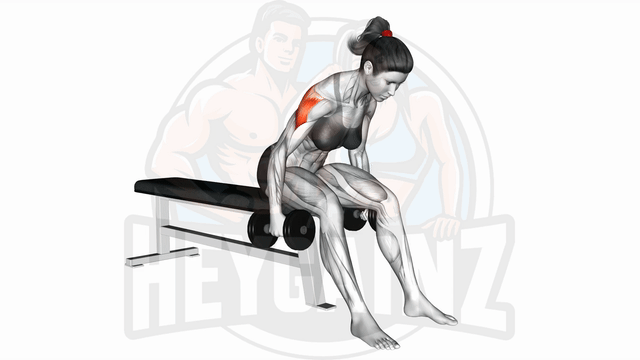
Instructions:
- 1Bend your upper body slightly and maintain a flat back
- 2Extend your arms and hold a dumbbell in each hand
- 3Lift the dumbbells to the side until your elbows are level with your shoulders
- 4Slowly lower the dumbbells back to the starting position
- 5Repeat for the recommended amount of repetitions
Tips:
- Do not use your back or body momentum to lift the weights, ensure the movement is controlled
- Keep your core engaged throughout the exercise
- Avoid lifting the dumbbells too high, they should be level with your shoulders
- Do not rush through the exercise; control the lift and the release
Dumbbell Rear Fly: Enhance Your Shoulder Workout
The dumbbell rear fly is an effective exercise that specifically targets the posterior deltoids, helping to build strength and definition in the shoulders. This exercise also engages muscles in the upper back, contributing to overall shoulder stability and posture. Whether you refer to it as the dumbbell reverse fly or the rear dumbbell fly, this movement is crucial for developing balanced shoulder muscles.
How to Perform the Dumbbell Rear Fly
- Begin by standing with a dumbbell in each hand, palms facing each other.
- Bend slightly at your hips, keeping your back straight, and hinge forward until your torso is nearly parallel with the floor.
- With a slight bend in your elbows, lift the dumbbells out to the sides, squeezing the shoulder blades together at the top of the movement.
- Lower the weights back to the starting position with control.
Benefits of the Dumbbell Rear Fly
This exercise not only builds strength in the rear deltoids but also enhances shoulder mobility and stability. Incorporating the dumbbell rear fly into your routine can help prevent shoulder injuries and improve your overall performance in other pressing or pulling movements.
Tips for Proper Form
- Maintain a neutral spine throughout the movement—avoid rounding your back.
- Focus on controlled movements to maximize muscle engagement, rather than lifting heavy weights.
- Keep your core engaged to maintain stability while performing the exercise.
- Consider using a bench to support your chest, allowing for better isolation of the shoulder muscles.
Alternatives to the Dumbbell Rear Fly
If you're looking for a dumbbell rear fly alternative, consider the band pull-apart or cable rear delt fly. Both variations target the same muscles while providing slightly different motion patterns for muscle engagement.
For those utilizing visual aids, check out the rear dumbbell fly gif to observe proper technique. Remember: prioritizing form over weight will yield the best results in your strength training journey.